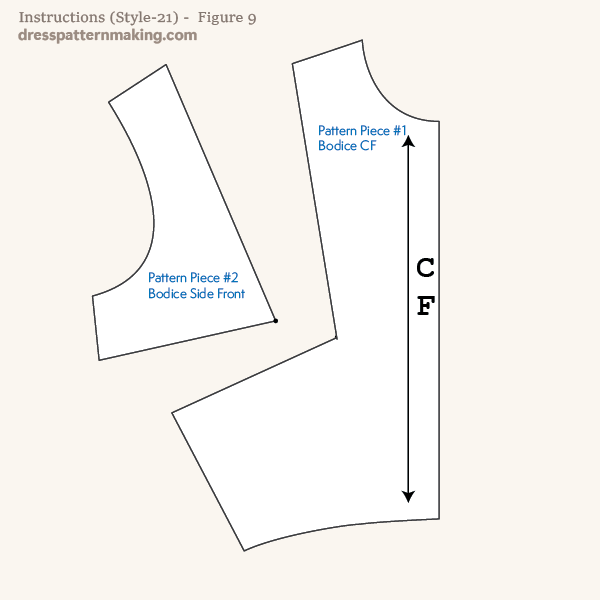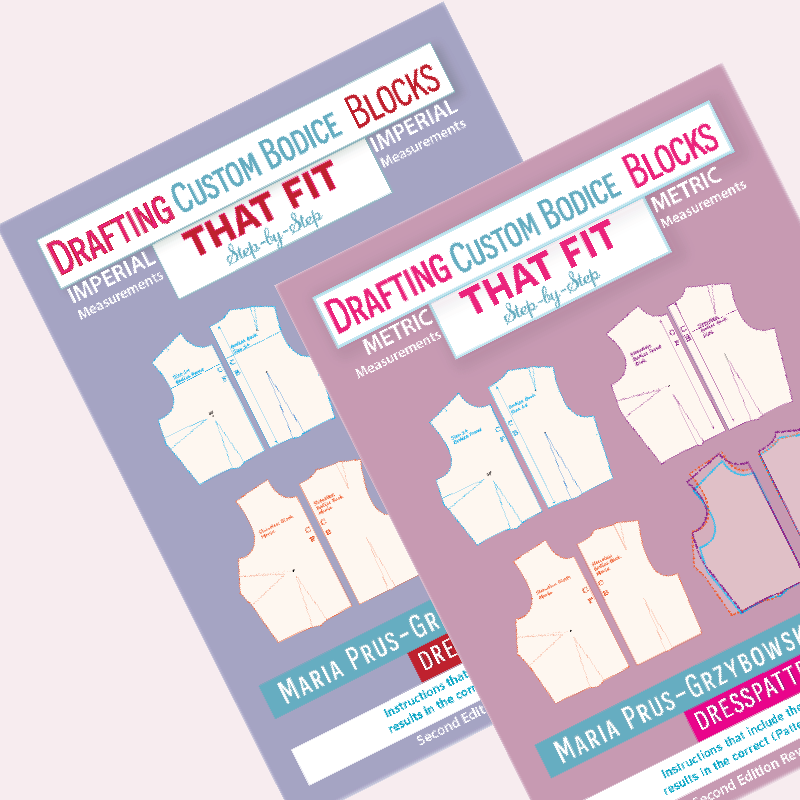Bodice Front Style 21
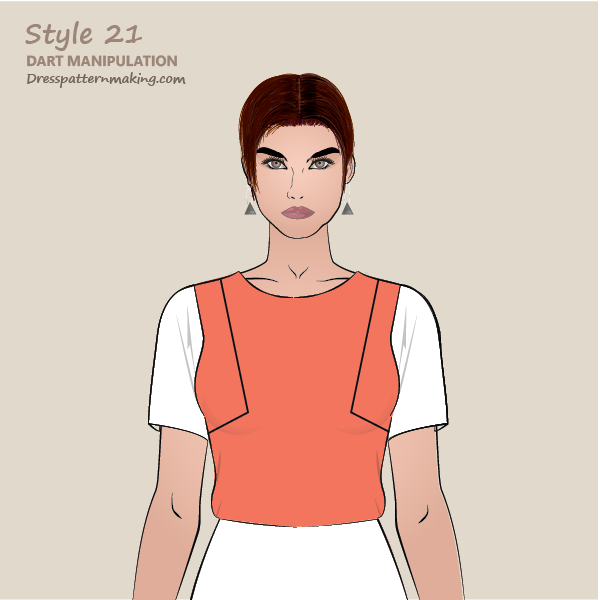
The bodice of this garment has an angular design line from mid-shoulder to the bust point, and the bust point to the side seam. There are no darts; the darts have been incorporated into the style-line. This style will have 2 pattern pieces for the front bodice.
Example: Outcome
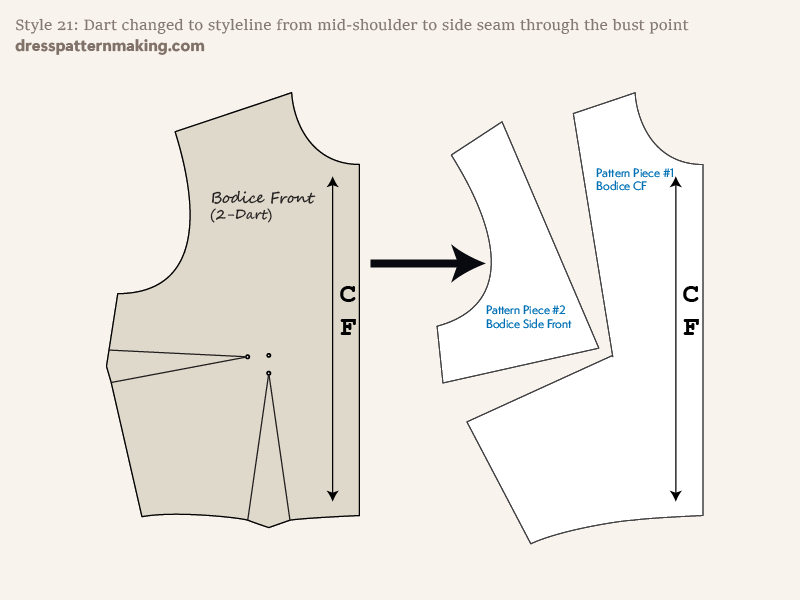
Figure B shows the block being used on the left (2-Dart Block), and the pattern that will be created (Style 21) on the right.
The focus of these instructions is covering the theory and practice of manipulating darts and the exercise finishes after the dart manipulation has been done. For production ready patterns you would need to take further steps to add seam allowance, pattern labels, pattern piece numbers, the grainline, etc.
Instructions (Style-21) - Figure 1
The focus of these instructions is covering the theory and practice of manipulating darts and the exercise finishes after the dart manipulation has been done. For production ready patterns you would need to take further steps to add seam allowance, pattern labels, pattern piece numbers, the grainline, etc.
In these images I have used color for emphasis only. Use a hard pencil (4H-6H) when hand drafting patterns.
- Draw the new design line on your block; from the mid-shoulder point A to the Bust Point.
I have marked the points A, B, C, D & E on the block to assist in the instructions. You do not have to write these on your block. Note that A, B, C, D & E relate to the points where the dart leg meets the edge of the block, as shown by the arrow tips.
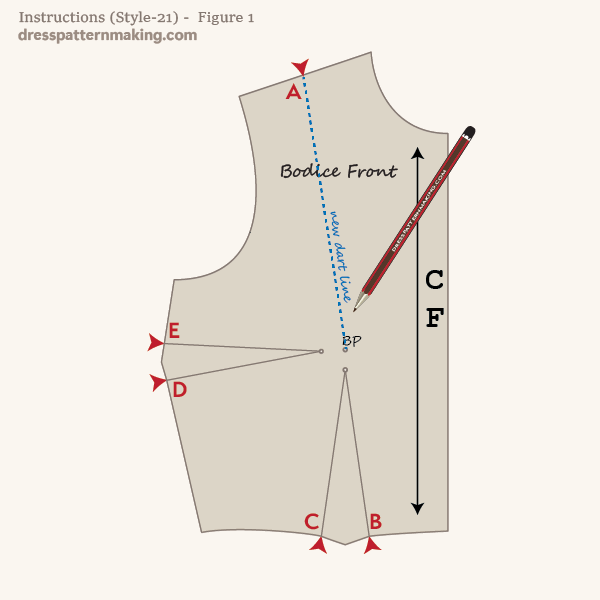
Instructions (Style-21) - Figure 2
- Holding the block firmly in place so that it doesn't move, trace around the block from the design line you drew (marked A on the image) to the first waist dart leg (marked B).
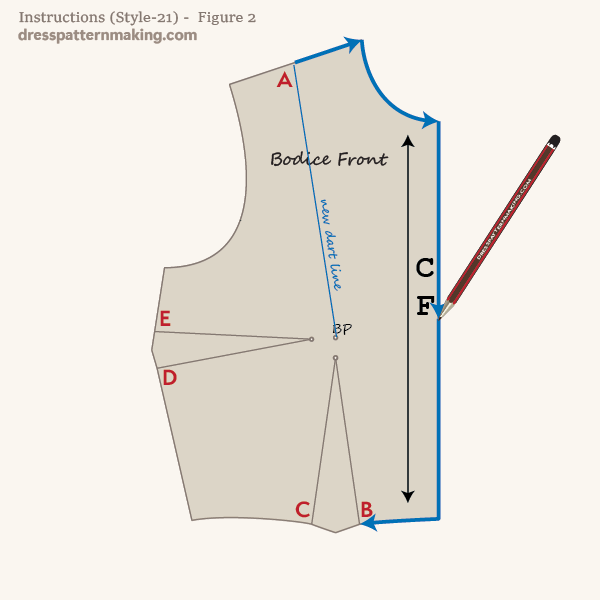
Instructions (Style-21) - Figure 3
- Mark the Bust Point by putting your pencil tip through the BP hole.
- Extend the dart leg line (B) out past the block. To make sure the line true, use a ruler to line up the Bust Point and the dart leg on the edge of the block, and continue that line beyond the block onto the paper (the blue line shown in the image).
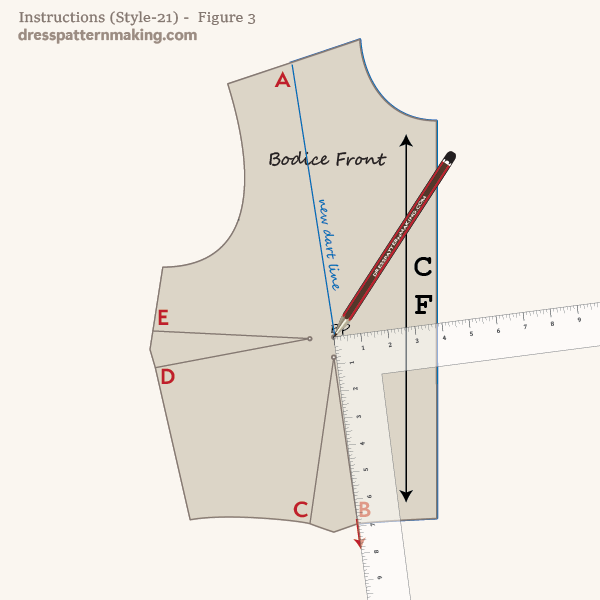
Instructions (Style-21) - Figure 4
- Holding the block down at the Bust Point, pivot the block anti-clockwise until the waist dart is closed. (Dart leg C reaches the extended line you drew in the last step - drawn in red in the image).
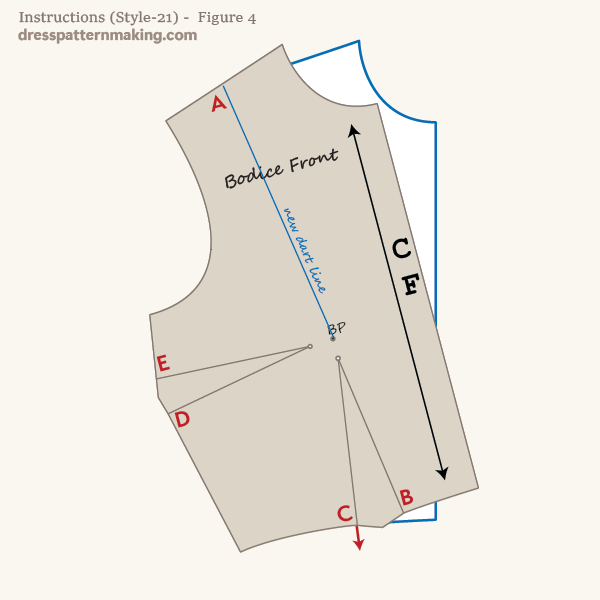
Instructions (Style-21) - Figure 5
- Making sure the block doesn't move, trace from C to the first waist dart D.
- You can lift up the block (see Figure 6).
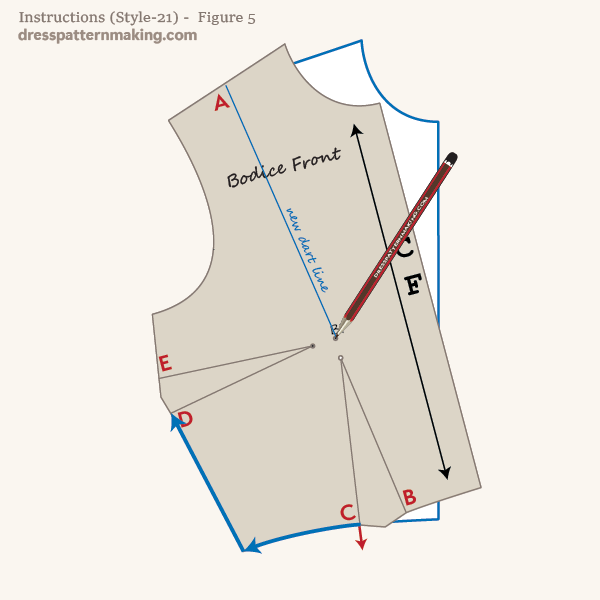
Instructions (Style-21) - Figure 6
- Draw lines from the BP to the edges of the traced block at the shoulder, and from the BP to the edge of the traced block at the side seam.
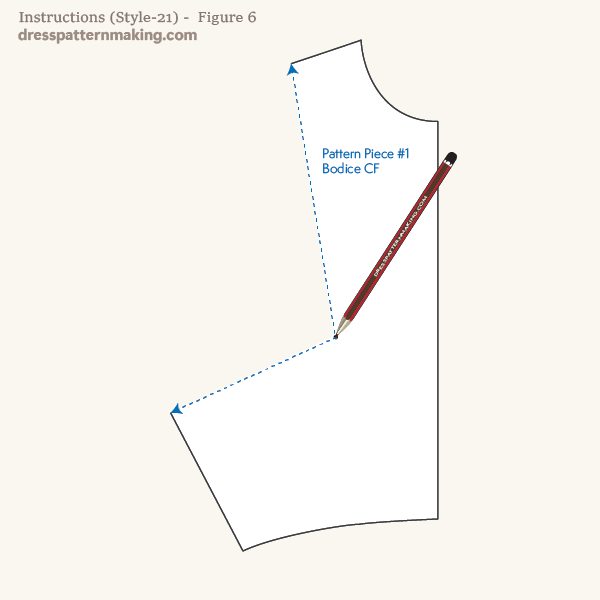
Instructions (Style-21) - Figure 7
This is pattern piece # 1, so we need to now make pattern piece #2. We need to leave some room in-between them for seam allowance.
- Put the block back down some distance away from PP#1, so that it won't overlap PP#1 AND so there is room for seam allowance for both pieces. (I have made the block a bit transparent so you can see that space).
- Trace from side seam dart E to new style-line point A.
- Mark the Bust Point.
- You can lift up the block (see Figure 8).
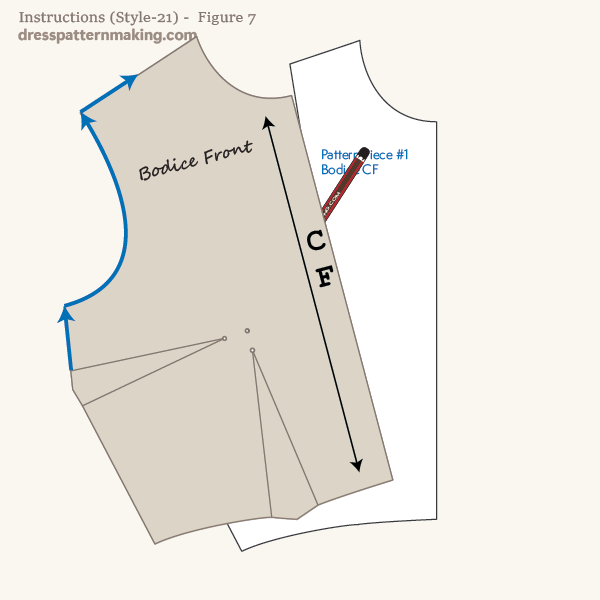
Instructions (Style-21) - Figure 8
- Draw lines from the BP (of the second pattern piece) to the edge of the block at the shoulder, and from the BP to the edge of the block at the side seam.
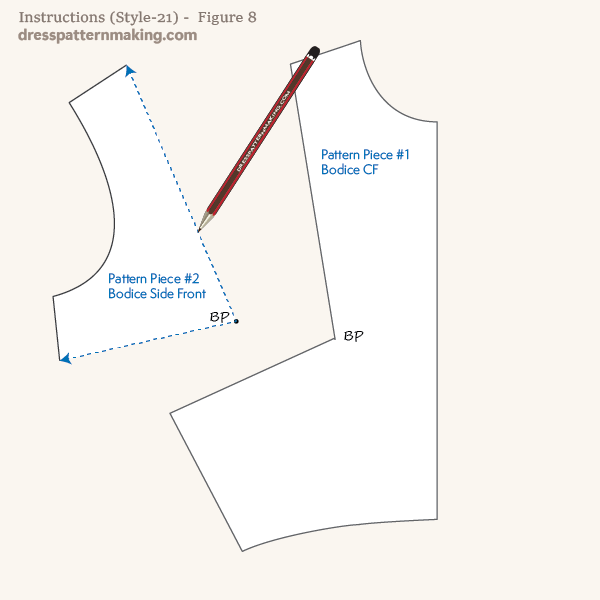
Instructions (Style-21) - Figure 9
Here is the outcome of the dart manipulation.
Note: If this was a production ready pattern, you would need to add seam allowance, label the pattern pieces, add cutting instructions and the grainline, note the pattern piece number and the total number of pattern pieces. This has not been done here as this section is focussing solely on dart manipulation theory, not creating production ready patterns.
